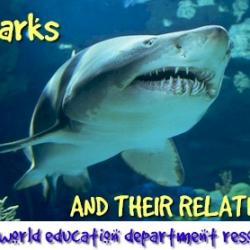Source Institutions
Source Institutions
Add to list Go to activity
Activity link broken? See if it's at the internet archive

In this activity, learners will explore trends in shark populations using shark landing data from the National Marine Fisheries Service. Learners will learn how to recognize the low risk of shark attack compared to other hazards, discuss the impact of fishing on sharks as long-lived, slow-growing species and evaluate shark population numbers using shark landing data.
- Under 5 minutes
- 45 to 60 minutes
- free per student
- Ages 14 - 18
- Activity, Lesson/Lesson Plan
- English
Quick Guide
Subjects
-
Earth and Space Science
-
Earth Structure
- Oceans and Water
-
Earth Structure
-
Life Sciences
-
Diversity of Life
- Animals
-
Ecology
- Populations
- Human Impact
-
Diversity of Life
-
Mathematics
-
Data Analysis and Probability
- Data Analysis
- Data Representation
- Probability
- Measurement
- Number and Operations
-
Data Analysis and Probability
-
The Nature of Science
-
Science and Society
- Public Policy
-
The Scientific Process
- Formulating Explanations
- Communicating Results
- Science as a Career
-
Science and Society
-
The Nature of Technology
-
Technology and Society
- Impacts of Technology
- Technology and the Environment
-
Technology and Society
Informal Categories
- Animals
- Nature and Environment
Audience
To use this activity, learners need to:
- see
- read
- use keyboard
- use mouse
Learning styles supported:
- Uses STEM to solve real-world problems
- Involves hands-on or lab activities
Other
Includes alignment to state and/or national standards:
This resource is part of:
Access Rights:
- Free access
By:
- Rose, Laura
Rights:
- All rights reserved, Virginia Sea Grant Marine Advisory Program,
Funding Sources:
- NOAA Sea Grant
- National Marine Educators Association
